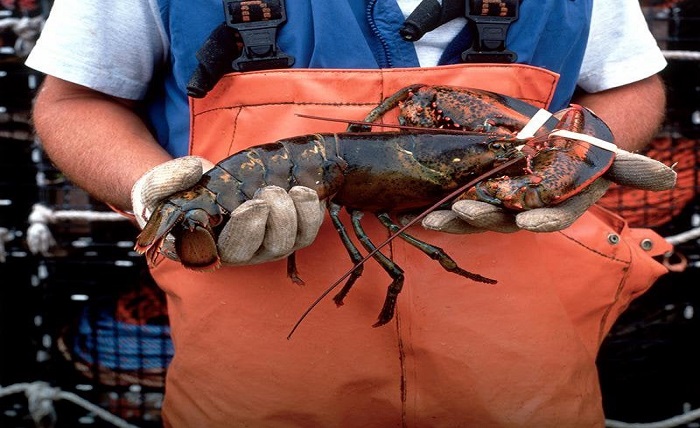How has technology changed the lobster production industry?

The times are changing! Technology has been gradually revolutionizing the lobster production industry over recent years with advances in both fishing and farming techniques. Gone are the days when companies had to exclusively rely on traditional methods, today myriad technologies such as satellite tracking, automated baiting machines, data collection through software systems, deep learning robotics, and more have enabled fishermen and farm owners to go about their business far more efficiently than was ever possible before. In this blog post, we’re going to dive into some of these new technologies and explore how they have truly changed lives in the lobster production industry for the better.
The benefits of utilizing cutting-edge technology for lobster production
Here are eight benefits of using technology in the lobster production industry:
- Enhanced efficiency – Fishing and farming techniques have become much more efficient with the aid of modern technologies like GPS tracking, automatic baiting machines, data collection systems, and more. This has enabled fishermen to locate more lobsters in a short span of time as well as farmers to better monitor their crops.
- Improved safety – Automation has helped make fishing and farming safer for workers by reducing the amount of manual labor required to perform certain tasks while also improving visibility on vessels or farms.
- Increased knowledge – By collecting data through automated systems or deep learning robotics, operators can gain valuable insights into the behavior and environment of their catch which can help inform decision-making about how best to manage resources.
- More accurate catch estimates – Automated systems can accurately estimate how much lobster a company has caught in a particular area, allowing producers to more efficiently manage their stocks and ensure sustainability.
- Reduced fuel costs – By utilizing GPS tracking systems and automated baiting machines, fishermen no longer need to manually search for lobsters as they did in the past, resulting in reduced fuel costs.
- Increased productivity – Automation has enabled operators to free up time that was previously spent on manual tasks and instead focuses on other more productive endeavors such as improving customer service or growing their business.
- Improved quality assurance – Technology can help ensure higher quality seafood is being produced by enabling companies to collect data about things like water temperature and salinity, which can affect the taste of seafood.
- Reduced waste – Automated baiting machines reduce the amount of bait used during harvesting, meaning less waste will be generated that could potentially damage the environment.
Overall, technology has been transformative for the lobster production industry in terms of both efficiency and safety. By utilizing cutting-edge technologies such as GPS tracking systems, data collection software, automated baiting machines, deep learning robotics, and more, operators are able to manage their stocks with far greater accuracy while also freeing up time to focus on other aspects of their business or customer service. The benefits of using technology in the lobster production industry have truly revolutionized the way companies operate and continue to do so going forward.
New lobster production techniques that have altered the lobster production industry
The lobster production industry, as with many other industries, has undergone a great deal of change over the years due to technological advancements. In the past, traditional methods were relied upon for producing lobsters such as hand-pulling and trawling, but today new technologies have enabled fishermen and farmers to be far more efficient than ever before. In this article, we will discuss some of the new lobster production techniques that have altered the industry and helped to make it more efficient.
- Automated Baiting Machines: These machines are used for baiting lobster traps in deep water or in areas where hand-baiting is not possible. The advantage of using automated baiting machines is that they allow fishermen to bait large amounts of traps quickly, reducing the amount of time it takes to complete the task.
- Deep Learning Robotics: Robots are being used by some lobster producers in order to automate certain processes such as trapping and sorting lobsters. This technology has enabled companies to improve their production efficiency while also minimizing labor costs and increasing accuracy.
- Data Collection Software: This software is used by lobster producers to collect, store, and analyze data from their operations. It enables them to gain a better understanding of the environment in which they are working, as well as the performance of their equipment and staff.
- Satellite Tracking: Technology such as Global Positioning Systems (GPS) has enabled lobster producers to track their fleets of boats and traps more accurately than ever before. The ability to monitor the location of vessels can help companies reduce operational costs and improve safety for their crews by providing them with up-to-date information about weather conditions or ocean currents.
- Aquaculture Technology: With aquaculture technology, lobsters can now be farmed in an efficient, cost-effective manner. It is also possible to monitor and adjust the environment in which the lobsters are being farmed, ensuring optimal growth conditions for maximum production yields.
Read more about overwatchpatchnotes
Lobster production-what does the future hold?
The lobster production industry is still evolving as technology and techniques continue to improve. As such, it is reasonable to assume that the future will be filled with even more advancements in this sector. Some of the potential new technologies and techniques we could see include artificial intelligence (AI) being used for decision-making related to harvesting, robotic traps being used to collect and sort lobsters, 3D printing of fishing lures or bait to reduce costs, and improved data collection software that can provide real-time information about fish stocks and environmental conditions.
Ultimately, technological advances have had an immense impact on the lobster production industry over the years, helping producers become more efficient while also reducing waste. The future looks extremely promising for lobster producers around the world as the industry continues to evolve and new technologies become available.
Lobster Shack is Australia’s leading lobster production company and is always looking for ways to keep up with the latest technology. If you want to stay ahead of the curve and make sure your business has the latest in lobster production, contact us today for a discussion about how we can help. Our team will be happy to provide you with all the information you need and answer any questions that you may have.
Read more about overwatchpatchnotes
Conclusion
Technology has had an immense impact on the lobster production industry over the years, enabling companies to produce better products with greater efficiency and accuracy. As research continues in this sector, it is likely that we will soon be seeing new technologies and techniques that could revolutionize how producers go about their operations. Lobster Shack has taken advantage of technology to provide its Australian and international customers with an experience that is both informed and of premium quality. We strive to continue innovating so you can have the best product available without compromising on sustainability or animal welfare. Contact us today for more information about how we can help your business stay at the cutting edge of lobster production technology.







